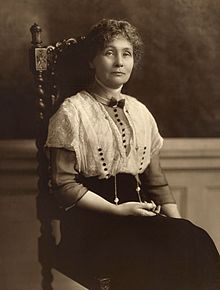
One of the first women to fight for suffrage for women or the right to vote, Emmeline Pankhurst was born in a family who had a tradition of radical politics. She stepped into the same dominion and became a passionate campaigner for women’s right to vote.
Born in Moss Side, Manchester in 1858, Pankhurst was raised in an environment of fierce political views and admirable family members. In 1878, she married Richard Pankhurst, a leading barrister who was 24 years older than her. Her husband was also a supporter of the women’s suffrage movement, which probably became an asset in her fight for women’s suffrage.
In 1894, Pankhurst was elected a poor law guardian, and she spent time visiting workhouses in Manchester. There, she saw an overwhelming amount of poverty and distress and became aware of the toll that it took on women’s lives. A huge shock to Emmeline was her husband’s death in 1898, after which she threw herself into the women’s suffrage movement, forming the Women’s Franchise League 1898.
In 1903 she formed the more militant Women’s Social and Political Union (WSPU). It was through the political action of this organisation that the term ‘women’s suffragette movement was created. She led a passionate group of women who were willing to take part in drastic action such as tying themselves to railings, smashing windows, and launching demonstrations.
The government and establishment were shocked at the seemingly violent tactics of the women, and many were arrested. The women went on hunger strike, where they were force-fed or released only to be rearrested – something known as ‘cat and mouse. In 1912, Emily Pankhurst was convicted of breaking windows and sent to Holloway Prison. In prison, she went on hunger strike in protest of the appalling conditions that prisoners were kept in.
In 1913, Emmeline’s daughter Christabel took leadership of the WPSU, and their tactics became increasingly militant. There was a polarised opinion among the members of the organization and many of the members, including two of Pankhurst’s daughters, left the WPSU.
However, at the outbreak of war in 1914, Emmeline Pankhurst used her campaigning tactics to support the war effort – and announced a temporary truce in the women’s suffrage campaign.The government then released the political prisoners and the suffragettes declared a truce.
During the war effort, countless women were drafted into factories and took on many jobs which were previously the preserve of men, such as bus drivers and postmen.
This radical social change of the First World War helped to diminish the opposition to women getting the vote; and in 1918, women over the age of 30 were given the vote.
In 1928, women were granted equal voting rights with men (at 21). However, in 1928, Pankhurst fell ill and died on 14 June 1928.